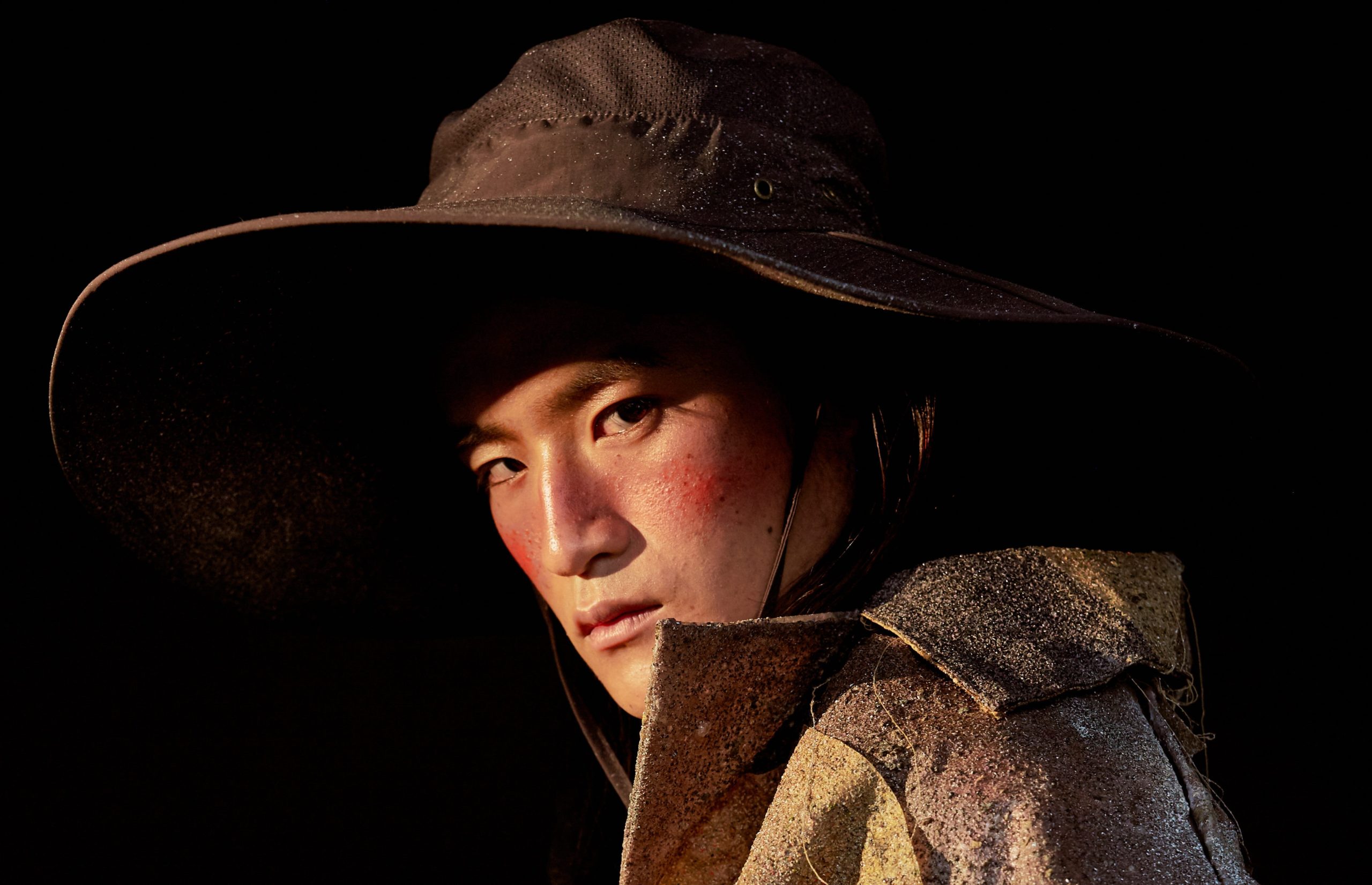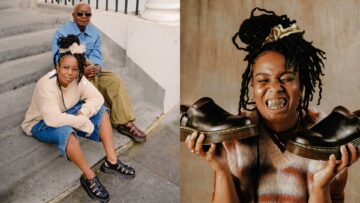
Tell us a bit about yourself.
I was born in Taiwan and raised in Hong Kong. My whole family’s from Hong Kong and work on film sets there — I grew up exposed to these sets, which heavily influenced my work.
Do you have a set of themes that you consistently explore throughout your work?
The overarching themes in my work have always been those of the films I direct. The film narratives come from personal experience and explorations of daily conversations. My work is very, very abstract. It’s not a case of being able to search for an image of something specific in the library.
The overarching themes in my work have always been those of the films I direct
I struggled to articulate myself during the first few years of Saint Martins because my concepts are always so complex, and rely on very long narratives that couldn’t be explained in a four week project. The films serve as primary research — visual context — so the presentation and styling within them are crucial.
Tell us about the slime. How does the materiality interact with the garment shapes, which heavily reference/are able to act as actual clothes?
I didn’t start out working with slime — I started by working with liquid latex to achieve a grainy, resin-like effect. I was working in Japan at the time, and after finishing, took some time out to really experiment and play. Slime was just becoming famous, it had gone viral and was all over Instagram. It felt like the definition of the time! Its enormous online presence made me think to just try it. I followed recipes and tried out different ingredients, glues, contact lens solutions, and granular materials.
Slime was just becoming famous, it had gone viral and was all over Instagram
After three months, I achieved the slime base, which looked like a very matte sheet of plastic. Its rigidity led me to take the initial decision to make cardboard-like wearable sculptures. During my final year of CSM, I accidentally left a piece of slime next to an iron. It didn’t melt, degrade or dissolve despite really heating up, instead becoming very malleable. I found I could steam it, and it would go floppy to where I could stitch and mould it, afterwards cooling down again in the new shape. Back then, I’d never been concerned with making wearable clothes so much as communicating artistically. I’ve always seen myself as more of an artist — ‘clothing’ for me is the last item on my list of concerns!
The clothes actually look different in the photos of the internal show versus the press show. The internal show was in May and the press show was in June. The weather was still quite cold during the internal, and the clothes structurally held up. The press show was a disaster! The slime drooped because of the hot weather, let alone how warm it was backstage. I had to really work to keep the clothes in some kind of structure for the catwalk. I also recently sent a garment to a magazine in the States, and the garment’s appearance changed in transit. The magazine complained that it didn’t look like the picture, and I had to explain that the slime behaves differently with temperature, and the garment changes in different environments. I feel like I’ve made multiple collections in one.
I recently sent a garment to a magazine in the States, and the garment’s appearance changed in transit
Tell us about the text accessories — the language and omission of certain letters.
Ultimately, the fashion is purely for bringing the films to life. The most literal way to do so is to have my dialogue as accessories, so that photos of a look appear like a still shot from a film. I initially thought to mix Chinese letters in. But I’ve lived here in London for seven years. If the text was in Chinese, ultimately the people I’m around might not understand it. I had to really weigh out if I should use Chinese for my own self-fulfilment, or English to successfully communicate with my audience. I did mix both in the draping and toiling process, like a film with multiple linguistic subtitles, but it became too busy and text-laden to where you didn’t look at the clothes anymore.
Moreover, because our modern world is rife with miscommunication, I took the dialogue verbatim from the films, and within the accessories, shifted a few letters or the spacing between words so that they become mixed up or grammatically incorrect. As it stands, the way we communicate often isn’t in proper English and our typing always has mistakes, yet we manage to translate these mistakes into a real understanding. There is poetry and nuance to it, but it’s very subtle. I wanted to design a conversation between people, not just a body of clothes or art work.
Tell us about your films as your set research and development methodology.
The films always came before the clothes. The first I developed in Japan, during the three months that I started experimenting with slime. I collaborated with my best friend who’s a moving image designer. We travelled to the countryside and shot the interaction with slime — the kind of abstract quietness of playing with it. The second was shot in Hong Kong, and was more of a fashion narrative. It functioned as a funnel from the abstract visuality and mood of the first film into concrete garment research. It was particularly about paper boys, their clothes, and the delivering of messages — the act of which really resonates with me.
At the moment, I feel like by delivering messages, I’m just constantly conveying really bad news. I’m taking on this identity that I really struggle with — that of this paper boy that is trying to understand himself and in a sense, leave his life behind. The third film is the catwalk show itself — where the model walks and the audience films. There could be hundreds of this ‘third film,’ all slightly different documentation from different angles, phones and perspectives. Like the gaps and missing characters in the text, they’re all ‘mistranslations.’

